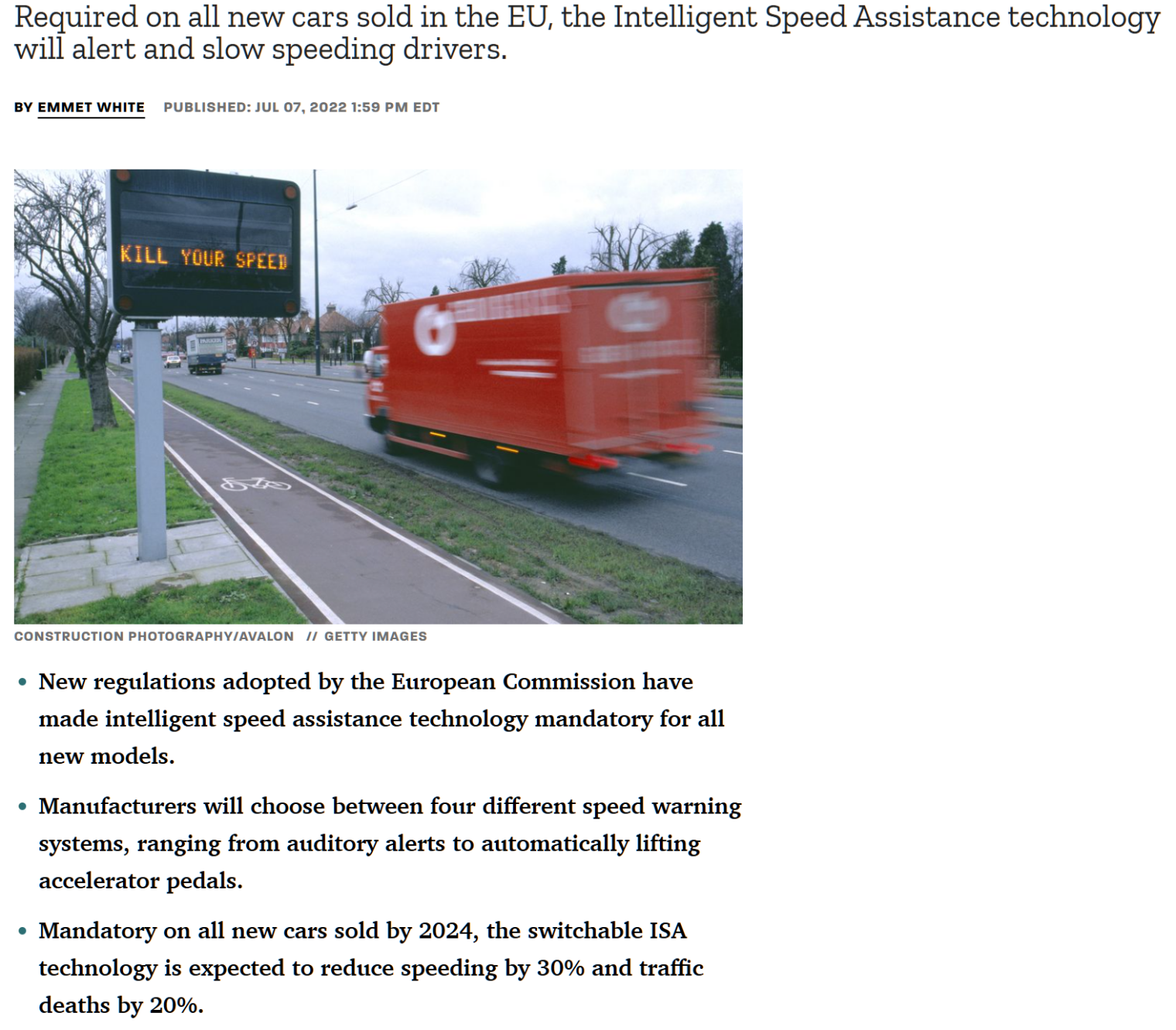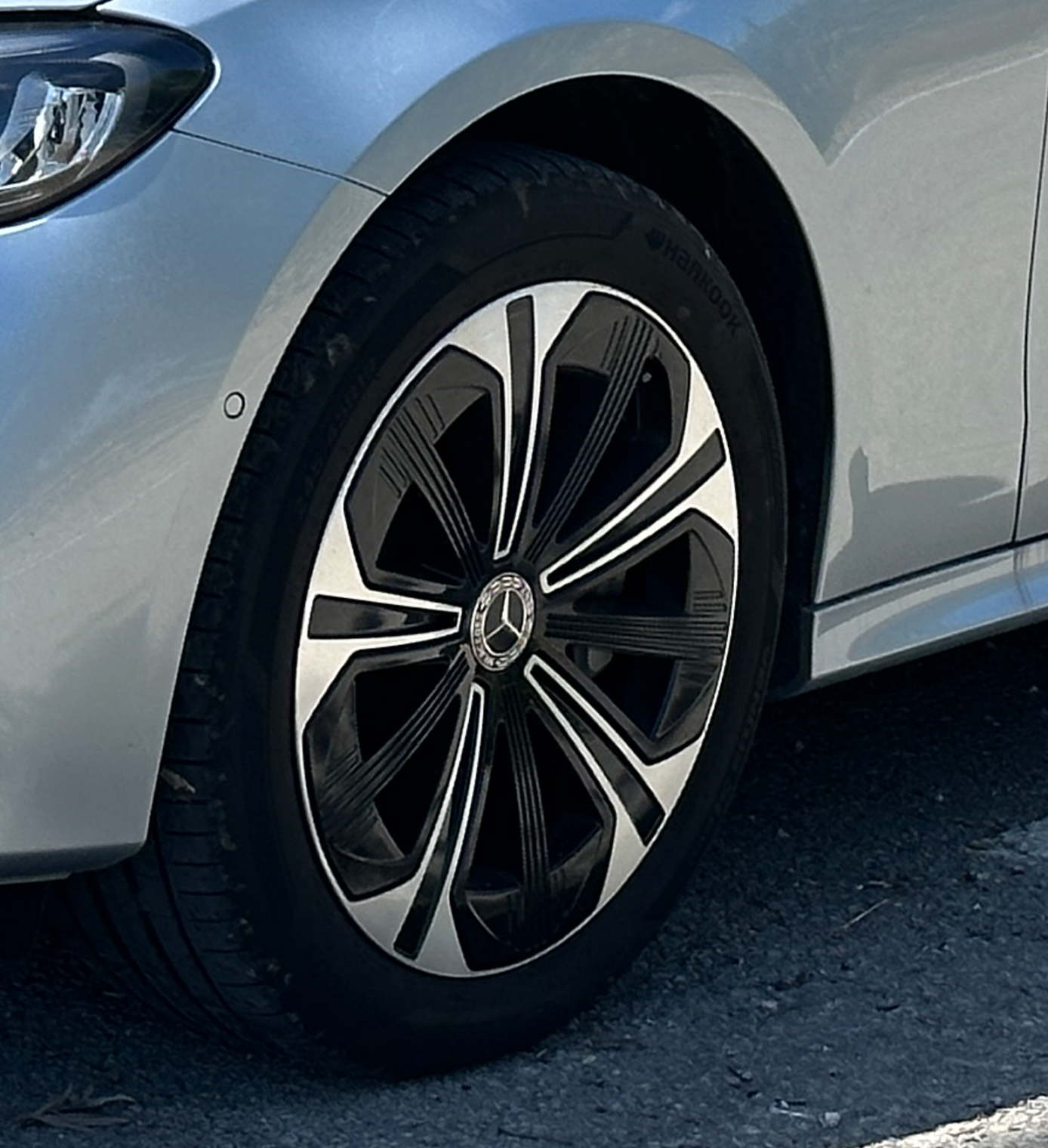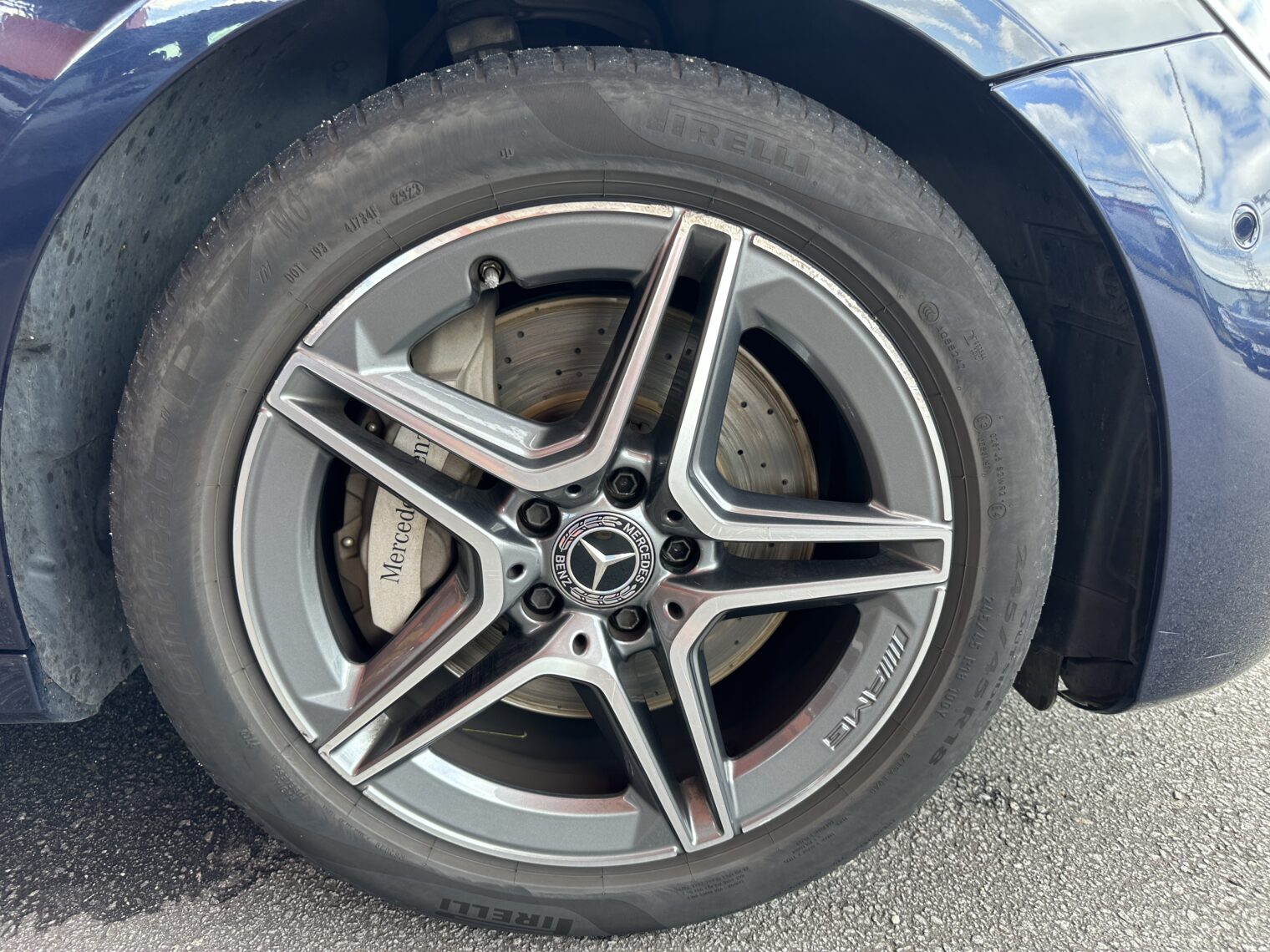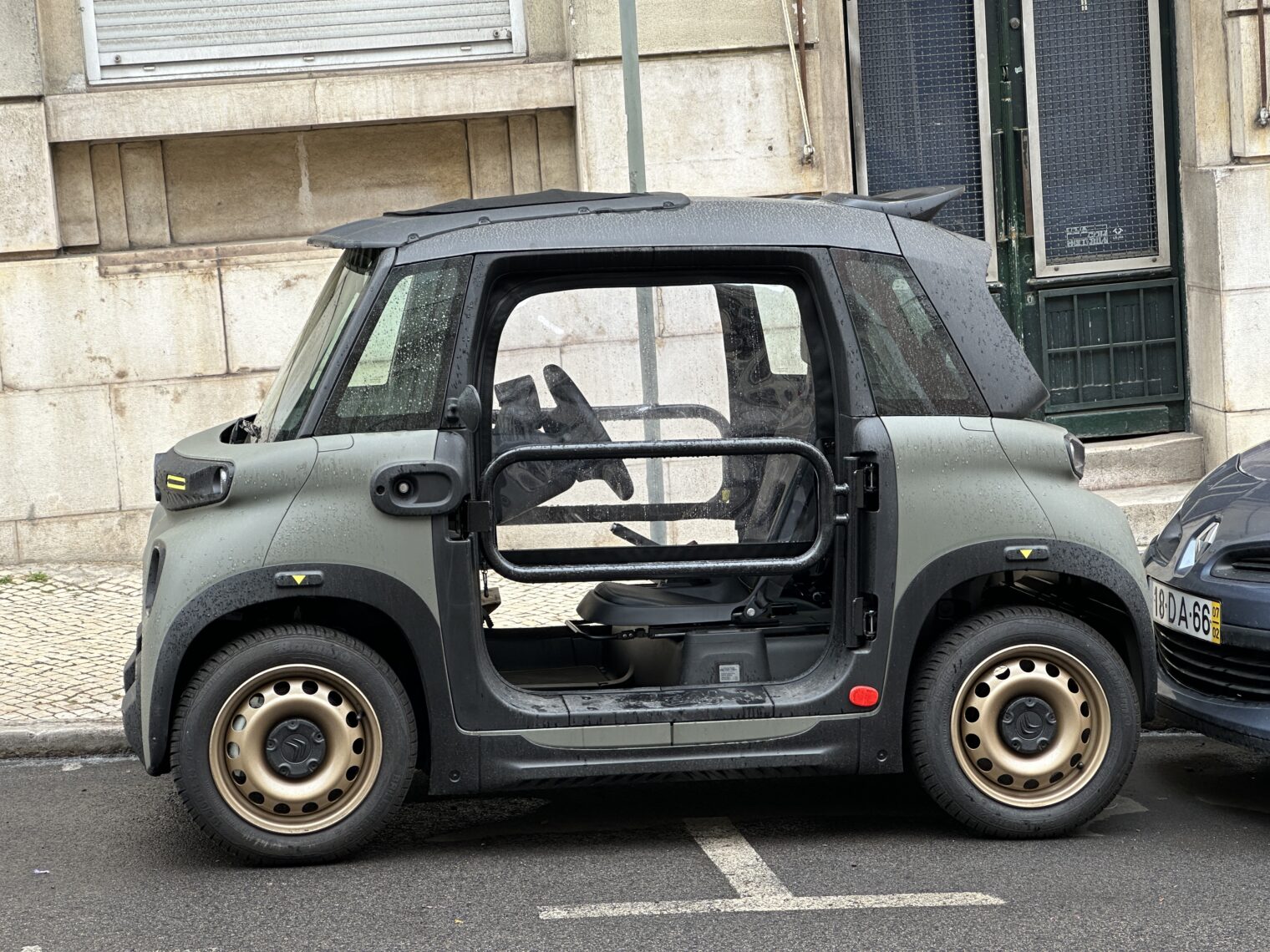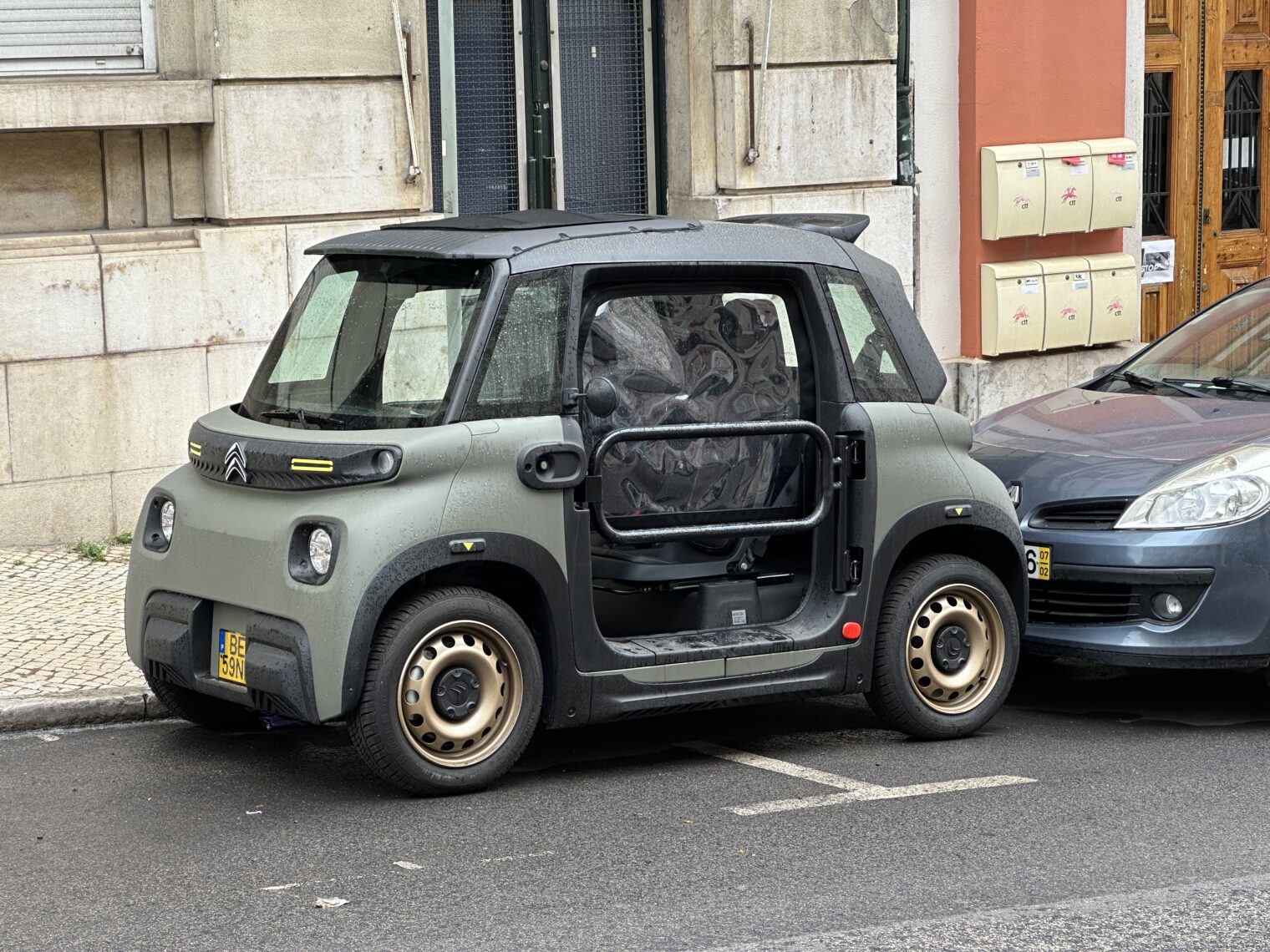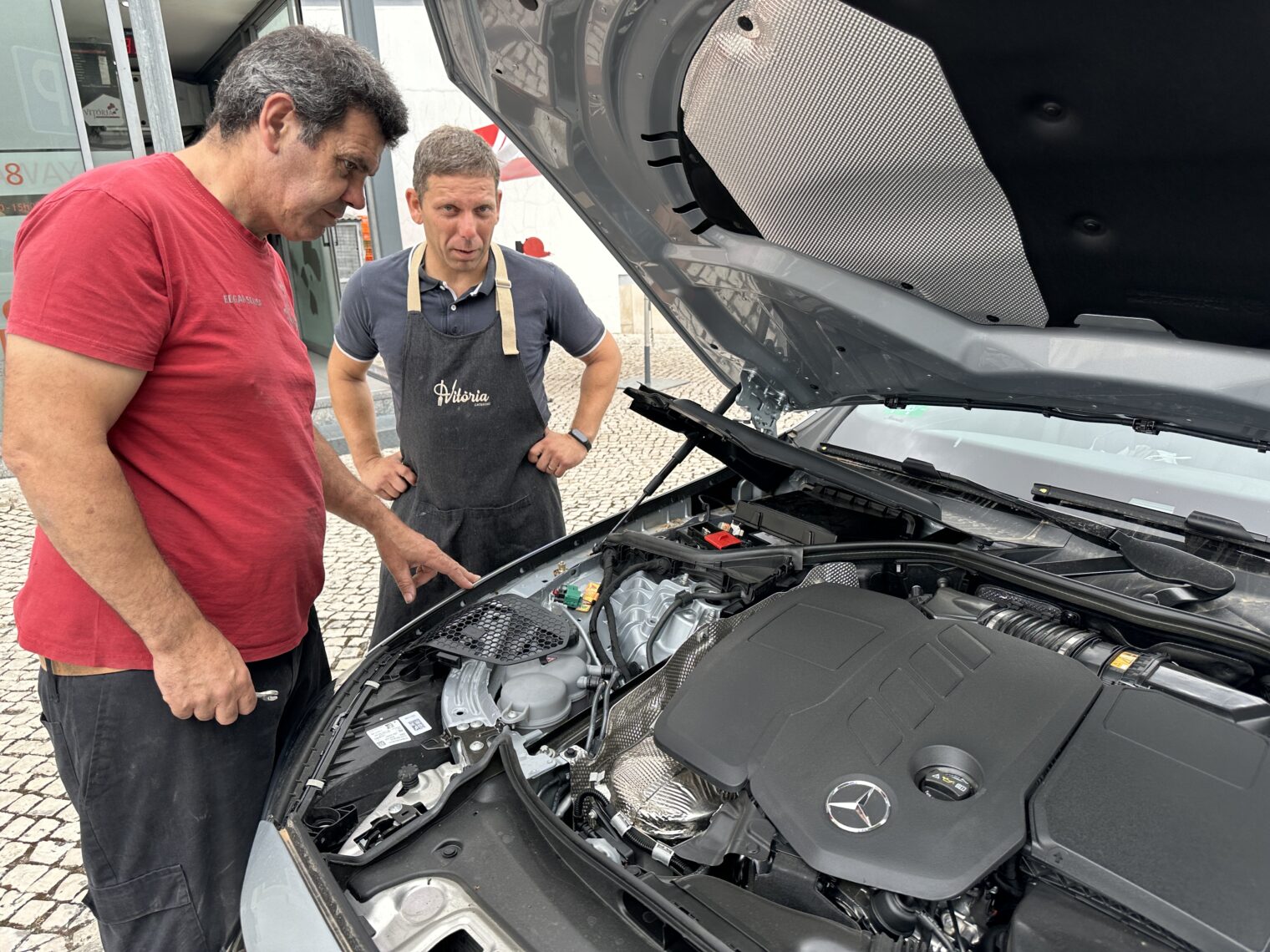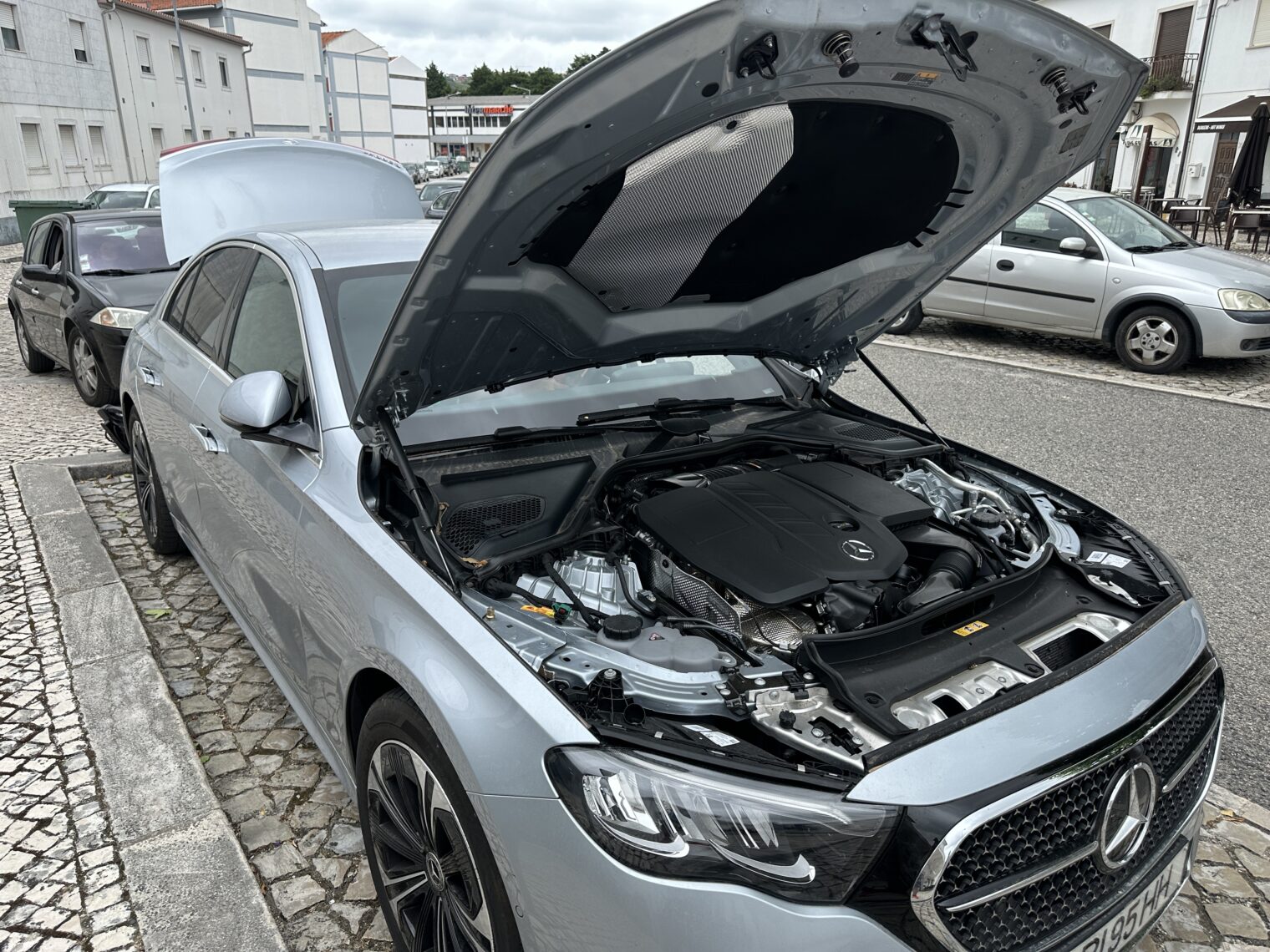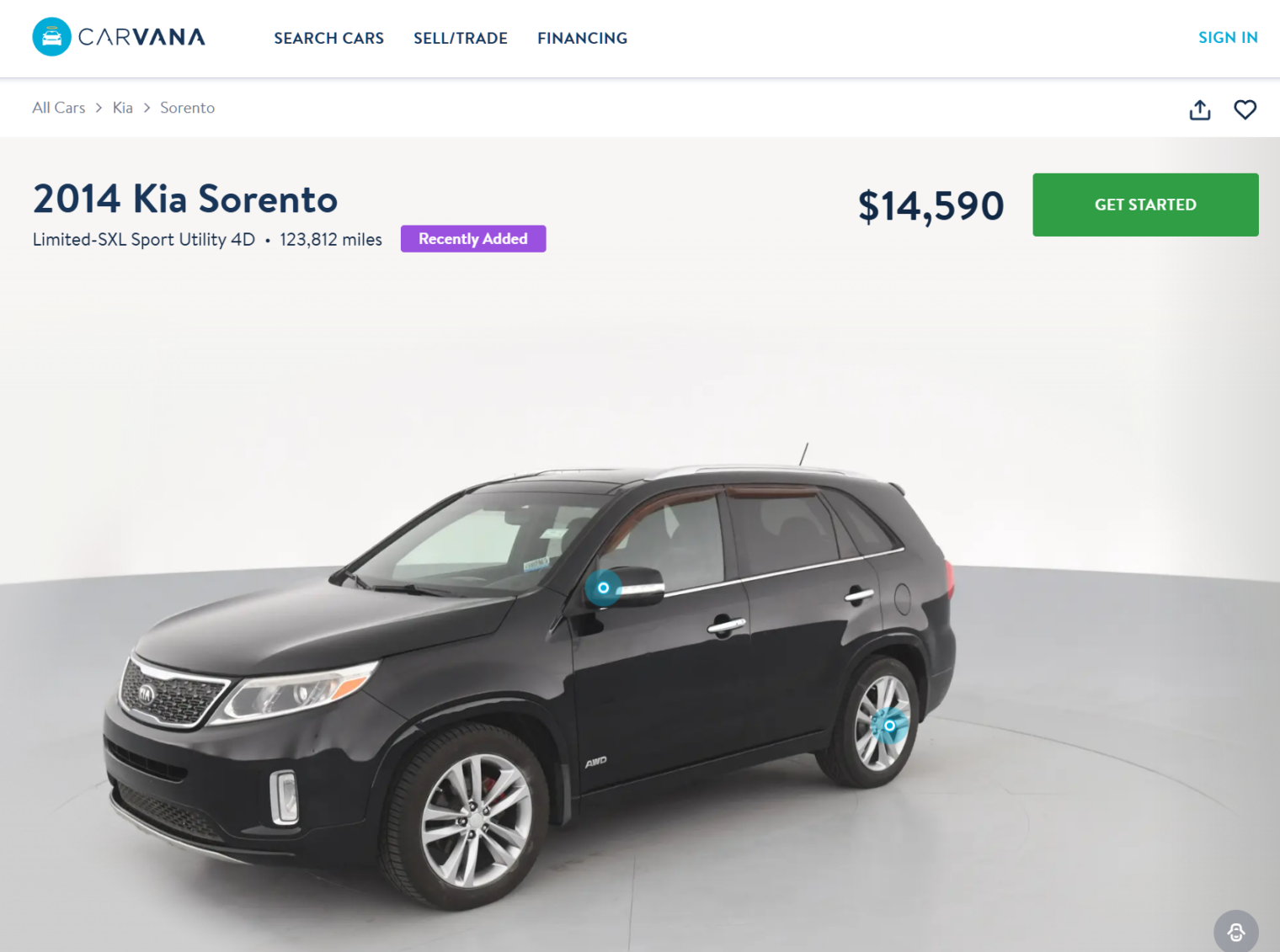Is this the month when Europeans stop speeding?
Loyal readers may remember my proposal to Save lives by limiting cars to 35 mph? (apply coronalogic to other situations in which human lives are at risk)
Maybe European readers can tell us if this is the month when Europeans begin to follow the Science. Back in 2022, Autoweek said “Anti-Speeding Tech Is Now Mandatory In European Union” and would apply to all new cars sold starting in July 2024:
The peasants still have some freedom, according to the article, but that could be fixed with an over-the-air software update:
The speed control function goes one step further by cutting power input from the pedal once the speed limit is reached. It’s important to note that drivers can override all four of these systems, either by acknowledging the audible or vibrating warnings or by pushing harder on the accelerator in the case of the haptic feedback or speed control function.
The same over-the-air update could impose my dream 35 mph (55 kph) limit and “save lives like a Fauci” (TM).
Separately, the speed nanny has supposedly already been in new-design cars in Europe for a year or two. Is there already statistical evidence that the hoped-for reductions in accidents/deaths have occurred? (Might be a little challenging to tease out of the data because newer cars in general might not have the same propensity to get into accidents compared to older cars (as with guns, it isn’t the driver who should be blamed, but the car).) If not, should we be skeptical about this new tech? A dramatic effect was predicted and shouldn’t be difficult to find if the prediction was true. (Though another confounder is that traffic gets worse in Europe every year and it is tough to be involved in a serious accident when you’re crawling along at 5 mph, working your way in between migrants’ tents and all of the pro-Hamas demonstrators.)
Our personal experience with the AI speed overlord wasn’t promising. Our almost-new rented Mercedes E 300de, which reliably started for two entire days (compare to 25 years for Toyota and Honda minivans), was consistently wrong when it came to determining a reasonable speed. When merging into traffic on the highway, for example, it would decide that a former limit of 50 or 60 kph applied and would issue frantic warnings about our 80-90 kph speed as we joined 120 kph traffic. It wasn’t smart enough to use front and rear cameras to see that the car was keeping up with traffic. When on scary narrow roads in little villages, the speed overlord would suggest blasting through at 90 kph. Most of the time, but not all of the time, the speed overlord’s displayed speed limit would be consistent with what Google Maps was showing. The audio warnings could be disabled by pressing and holding a mute button the steering wheel and we nearly always had to do that. The 10-year-old said “Let me get into the front seat so that I can give ‘Hey, Mercedes’ a piece of my mind.”
Related:
- Deplorable Fox reports that Deplorable Eurohaters in the UK have opted out of this life-saving plan
